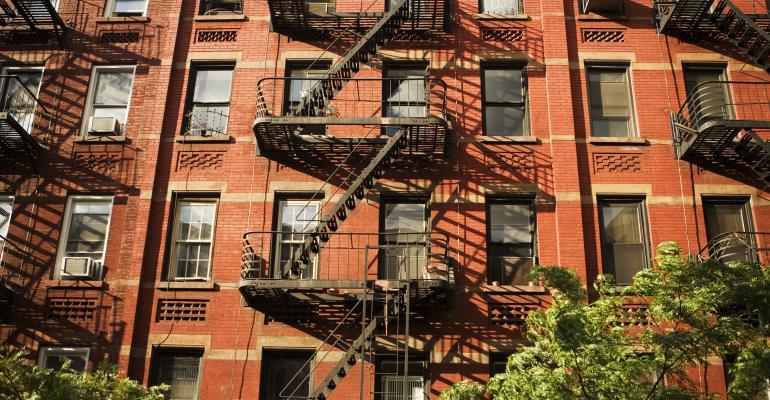Investors are still looking for apartment properties that can be renovated to earn more rental income. But properties with value-add potential are becoming more difficult to find.
“There are very few properties left that are easily diagnosed as value-add opportunities,” says John Sebree, first vice president and director in the national multi housing group of brokerage firm Marcus & Millichap. “A lot of that product has already been upgraded.”
Investors continue to hunt for high-yielding opportunities, and value-added renovations of apartment properties have performed well in this real estate cycle. But as the pool of attractive assets shrinks and rent growth slows, investors must be more careful as they assess potential deals.
How long can this keep going?
Usually, value-added investments flourish during the part of the real estate cycle after rents have grown for class-A properties, leaving the rents at class-B buildings far behind. “When the market gets way out in front of class-B properties, then value-added renovations help them catch up to it,” says Sebree.
Eventually, the most promising properties are renovated and rent growth slows or stops. The value-add strategy has been popular among investment funds that buy multifamily assets since at least 2014. “This is going on a little longer than anticipated,” says Peter Donovan, executive managing director with CBRE Capital Markets, multifamily. “‘Value added’ is still the hottest investment objective for apartment properties.”
There are still markets in the U.S. where the difference between the monthly rent on class-A and class-B apartments has widened to more than $400 a month. In these places, developers who spend about $10,000 per apartment might hope to increase rents by as much as $150 a month and still be several hundred dollars below the rents of class-A properties, says Donovan. The renovations often focus on the assets’ common areas. “They generally spend a lot on the clubhouse and a new amenity package.”
The challenge is finding properties in these submarkets that have not already been renovated. “A lot of these markets have already been picked through,” says Sebree.
Larger metropolitan, urban cores which have high population density and economic and transportation diversity—cities like Baltimore, Miami and Newark, N.J.—present the greatest opportunity, according to data firm Yardi-Matrix.
Also in play should be markets that have received relatively little attention from investors. “Some of the strongest markets we see for value-add are in Texas, Oklahoma and the Southeast,” says Doug Ressler, director of business intelligence for Yardi Matrix.
To assess the market for value-added opportunities, investors should look carefully at comparable apartment properties. “You have to be careful when you look at the rent differential… There probably are projects in the market that have already been renovated. How did they do?” says Donovan. So far, most value-added investments have been succeeding, thanks to strong demand. “The vast majority have had healthy returns,” says Donovan.
But there is a limited set of properties that make good candidates for this type of renovation. Some buildings created in the 1990s can work. Properties originally built in the 1980s, 1970s or earlier often have problems—such as low ceilings or awkward floorplans—that can’t be fixed with a relatively light renovation.
Today, it is also hard to find properties with potential value-add opportunities that haven’t already been partially renovated. Few developers renovate all of the apartments at a property. Many fix up as little as a third or a quarter of the apartment units, and leave the rest untouched, according to Donovan. “You want to sell the same story of potential upside to the next investor,” he says.





